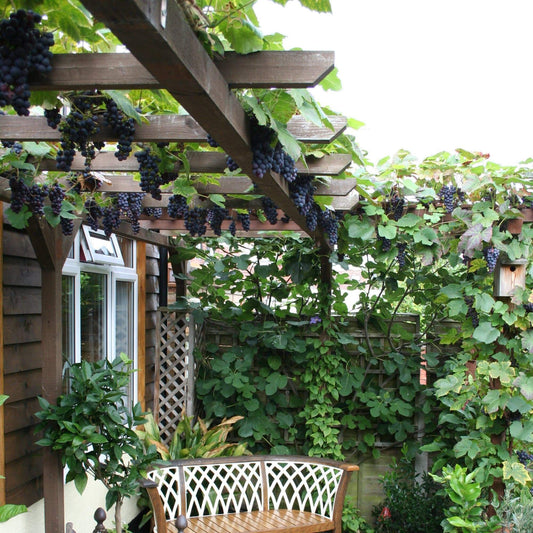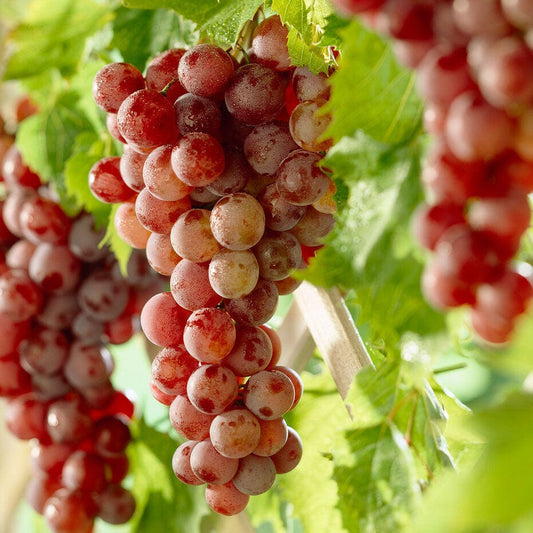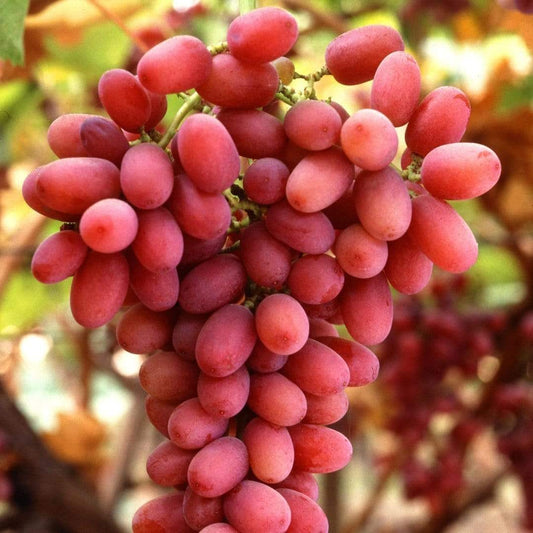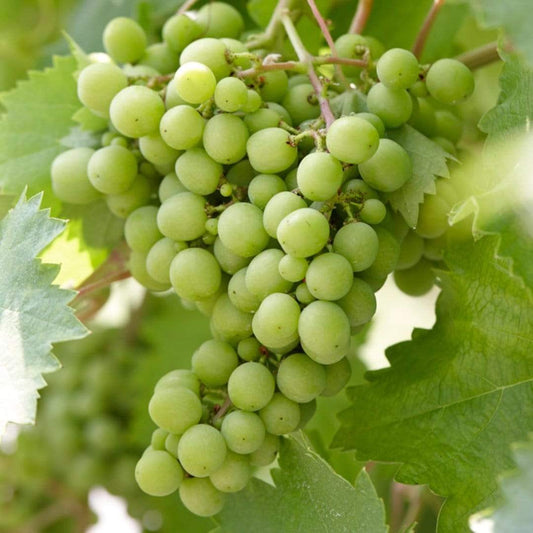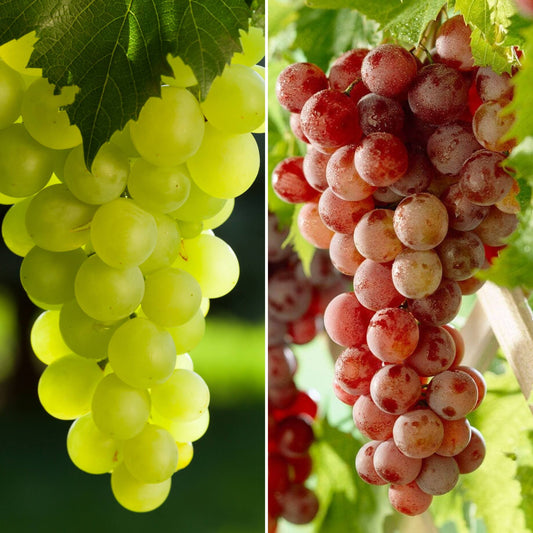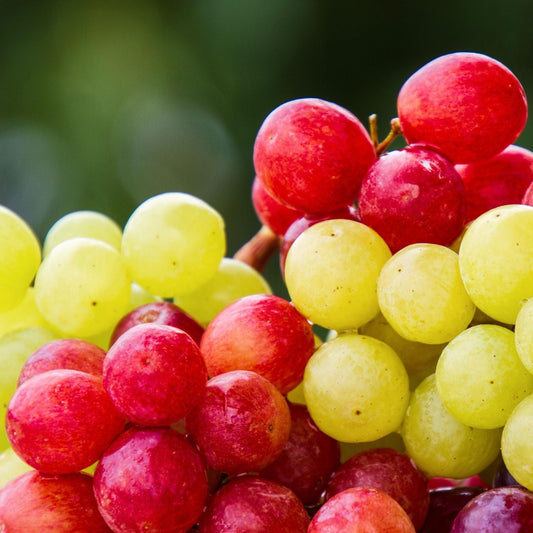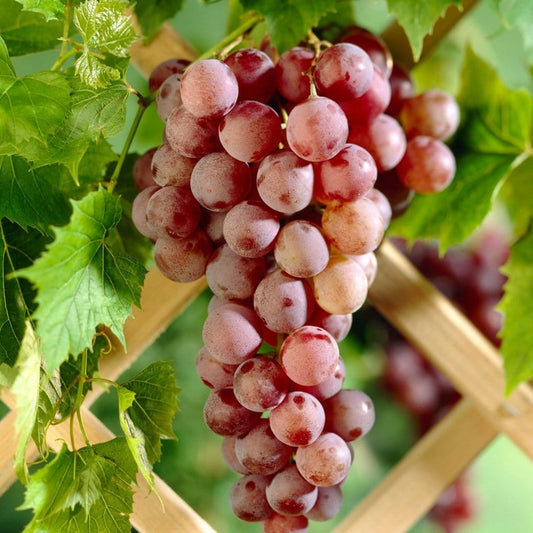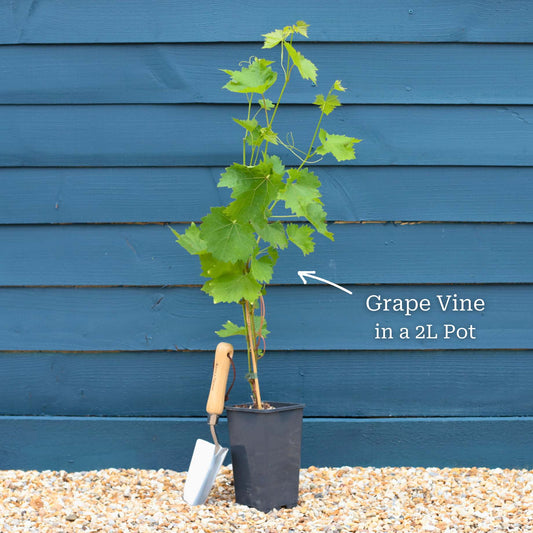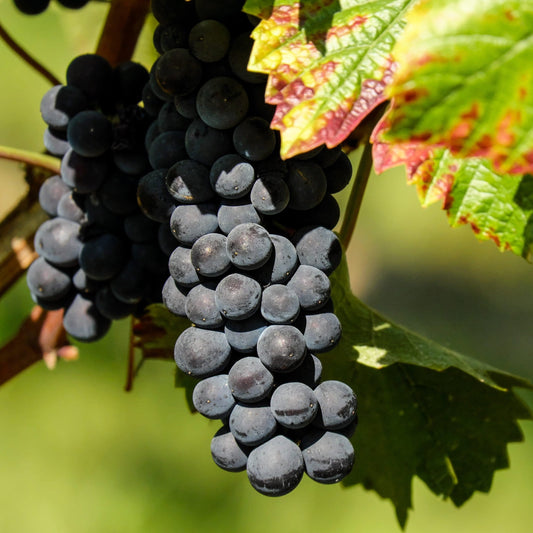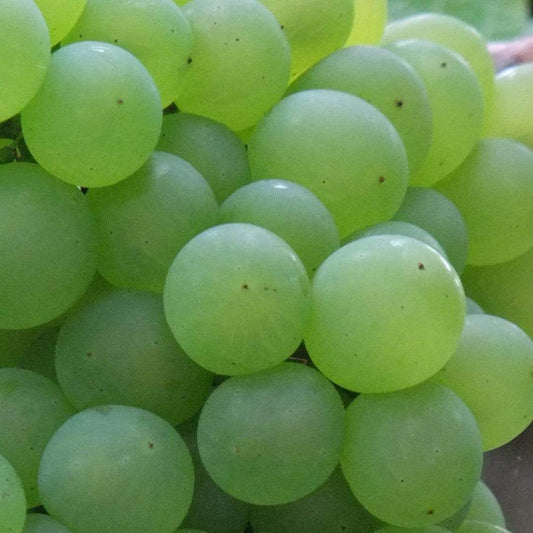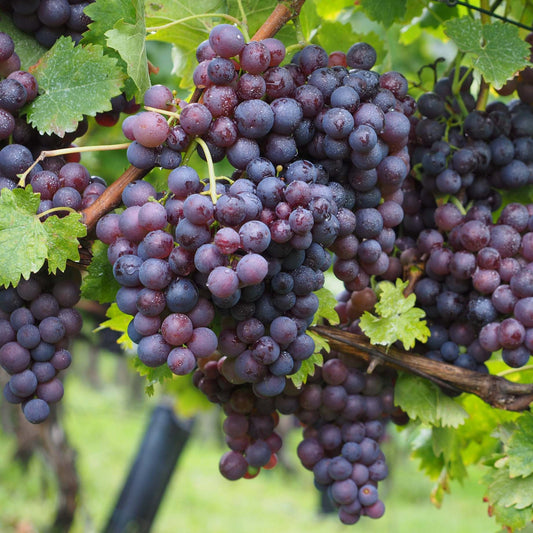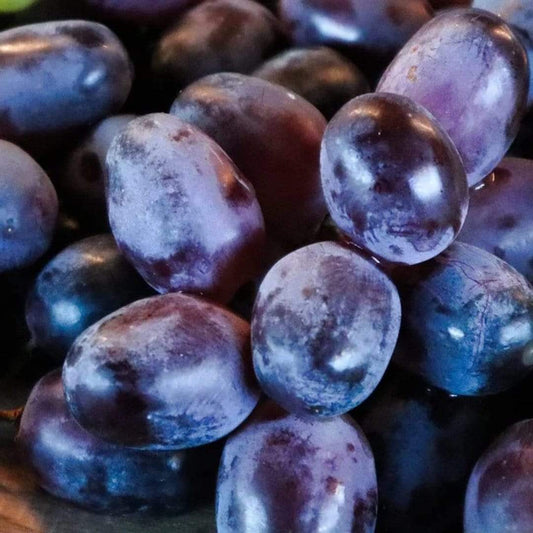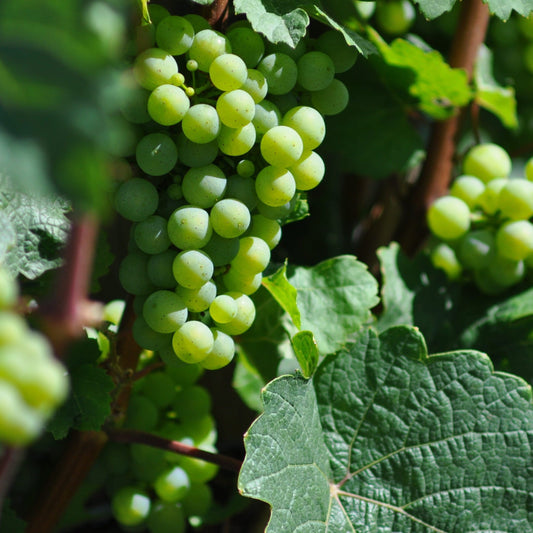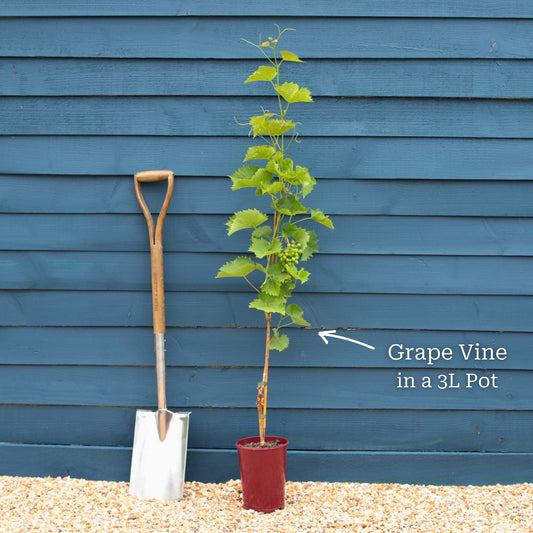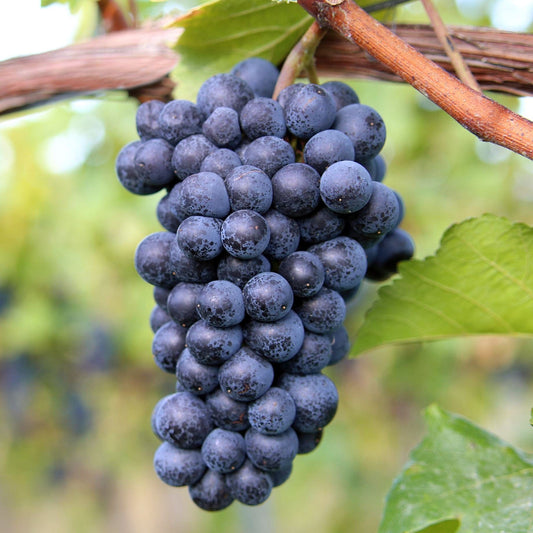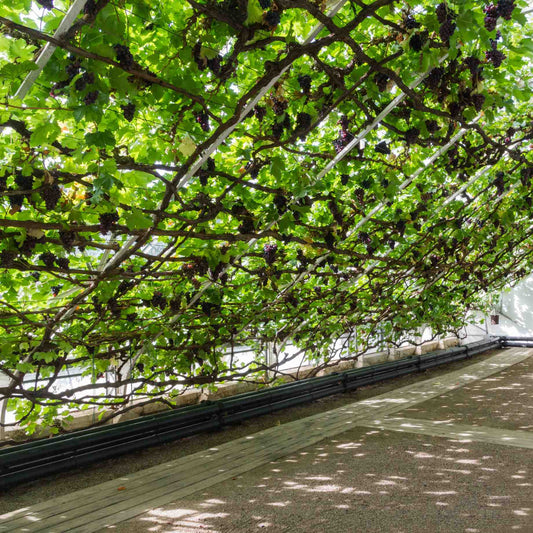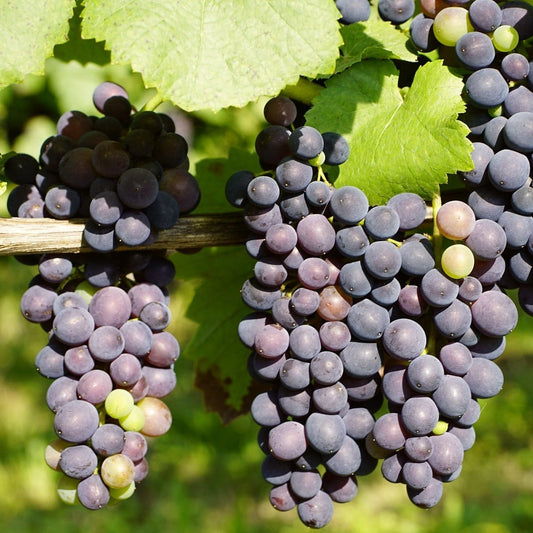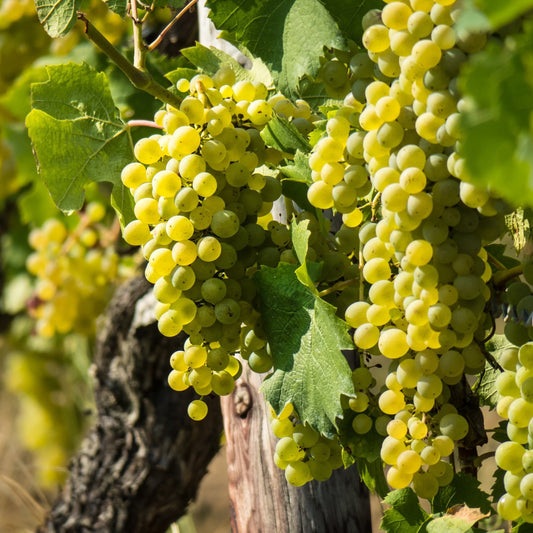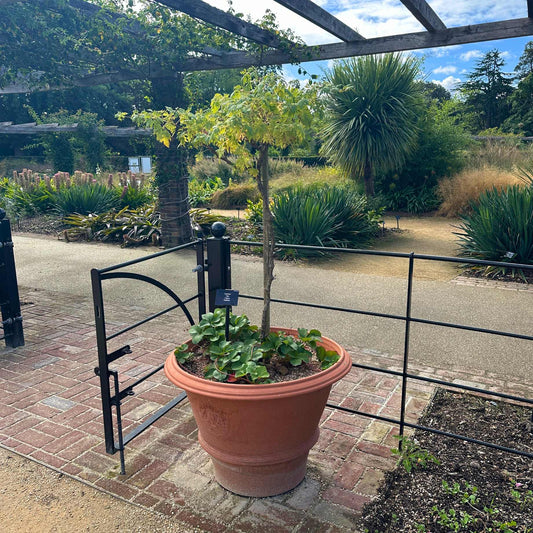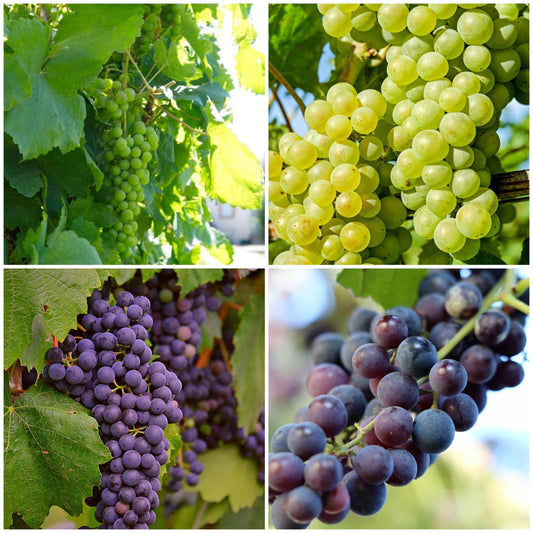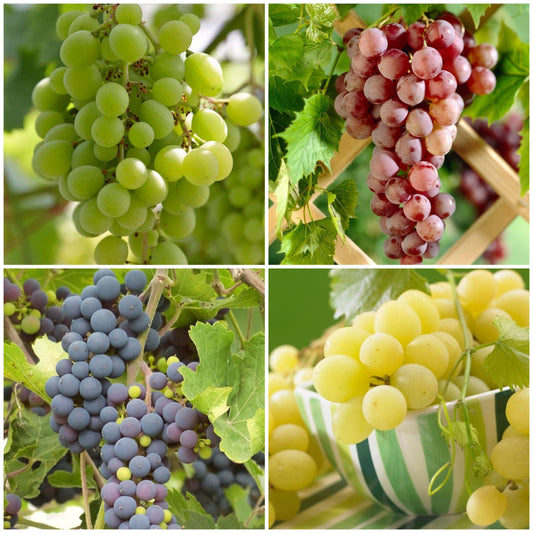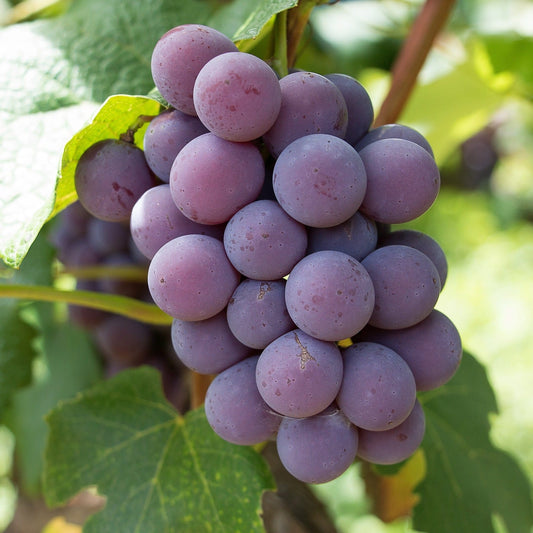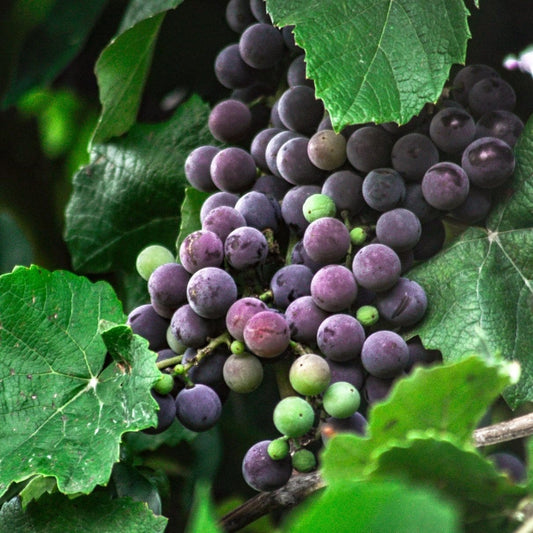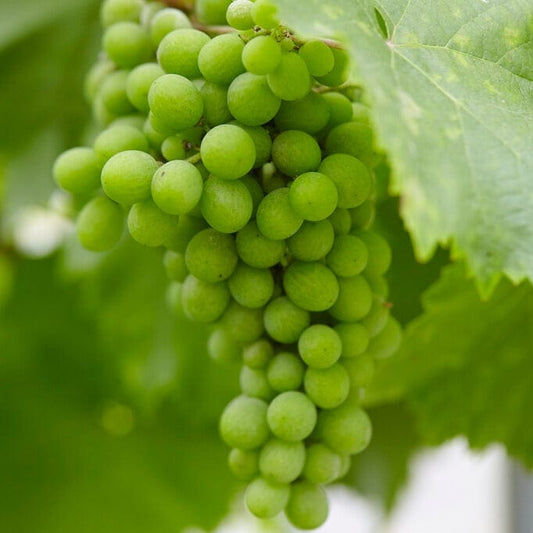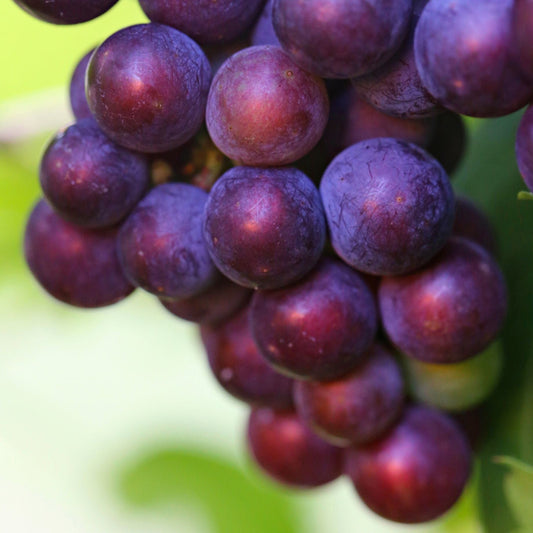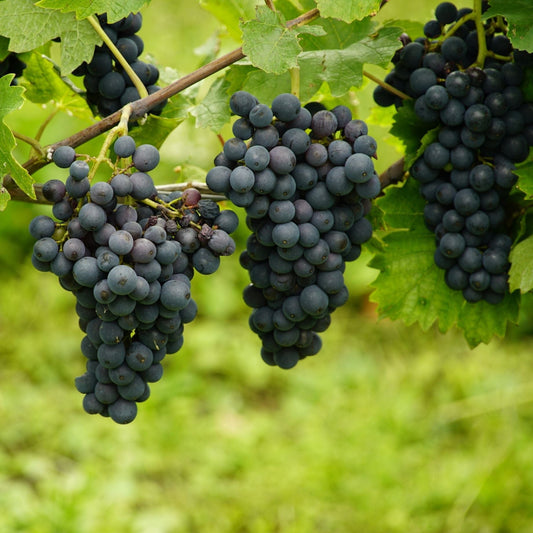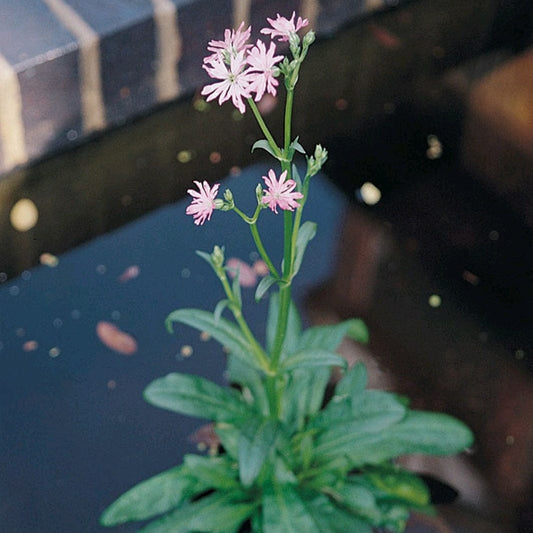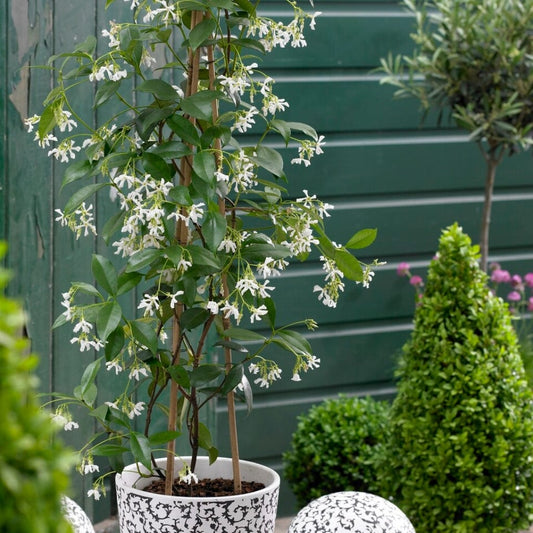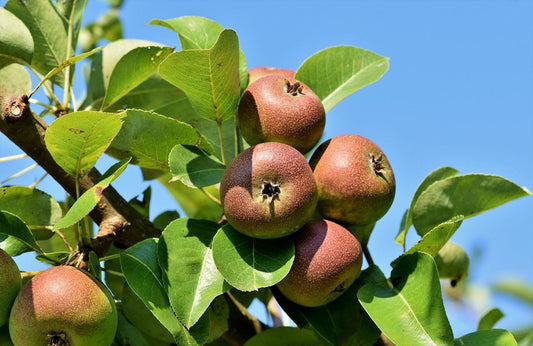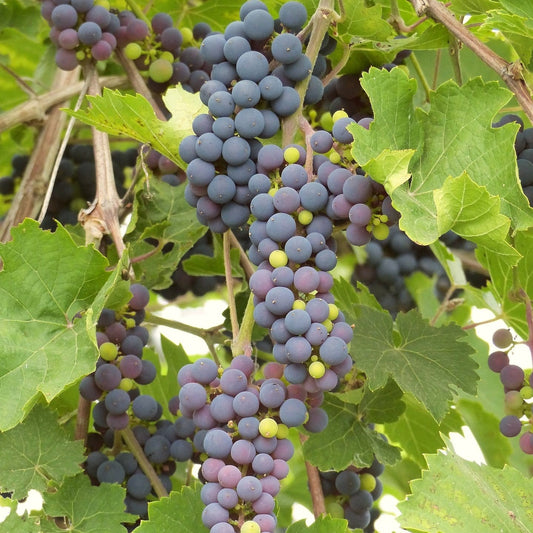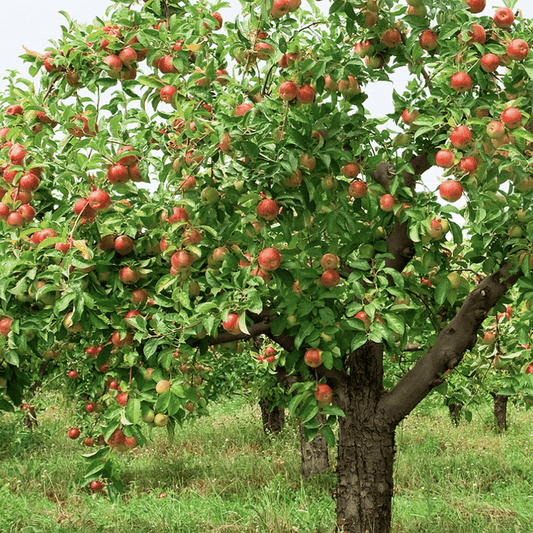South Downs National Park
Meet Danielle
110 years' expertise free with every plant
You simply can’t buy better fruit plants and here’s why. Danielle grows them outdoors, just like our nursery has done since 1908, so they’re more than a match for the UK weather. Danielle only has time for the top performing varieties, meaning that you can be assured of a successful (and blooming tasty) soft fruit crop.
Need help picking?
Grape Vine FAQs
Can I grow grapes in the UK?
Yes, you can! You can grow grapes undercover in a greenhouse or conservatory, or outdoors (there are varieties available for both indoor and outdoor growing). In fact, the UK has a growing vineyard industry!
How do you grow grape vines?
Grape vines are very simple to grow. Ideally, plant an established plant in a sheltered position in full-sun for the best crop. Grape plants need space to climb, so ensure to plant next to a sturdy structure such as a pergola or arch, or support with wires along a fence. In the first season, ensure your plant is kept well-watered.
How far apart should you plant grape vines?
Leave 1.5m between each grape plant, as well as a 15cm gap between the plants and the supporting wall or trellis.
When should you plant grape vines in the UK?
It’s best to plant new grape vines between the months of October and March.
How do you grow grapes from seed?
If you're not in a hurry for grapes, they can be grown from seed. However, it is a long process with many factors to consider. By far, the easiest and quickest way to ensure a harvest of juicy grapes is to start with a plant. These may be grafted plants or grown on from cuttings taken from a mature vine. Which means you get a grape vine ready to flourish and thrive!
How fast do grape vines grow?
Grape vines can climb structures fast. New shoots grow vigorously in the warmth of spring and summer. At their peak during the growing season, they have been known to even grow as much an inch per day! Although growth will slow as temperatures fall again. In the winter, the vine will go dormant for a well-deserved rest.
What is the best feed for grape vines?
Grape vines appreciate a good feed, and will reward you later with lush growth and hopefully some yummy grapes. Ideally, feed the plant with a high potassium fertiliser early in the Spring, before the plant gets going again. Some grapevines grown inside or in containers may need additional feeding throughout the summer.
Can grape vines be grown in greenhouses?
Yes! Grape vines will enjoy the warmth and shelter inside a greenhouse. You can either plant the vine directly in the ground in your greenhouse or in a pot. Another option is to plant the grape outside of the greenhouse and then train the vine inside the greenhouse. However, you will need some sort of gap for this option.
How long does it take for grapes to ripen?
It varies by variety, but grapes begin to ripen from late summer well into autumn. However, if the weather has been particularly hot or cold, this may vary. Ensure to pick grapes only when they are ready, as they will not continue to ripen off of the vine.
How long before grape vines produce fruit?
Grape vines won't usually produce a good grape harvest until they are in their third year of growth. Our grape vines typically take about two years to crop. But in the meantime, you'll still have an abundance of glorious green foliage which turns stunning shades of burnt orange and fiery red in autumn.
How do you prune grape vines?
To ensure you get plenty of fruit, grape vines need a good prune in early winter whilst they are dormant. Aim for late November and December to avoid sap bleeding. Pruning methods depend on the age of the grape vine, so make sure to check out our pruning guide before you start.
How do you train a grape vine?
There are three main ways to train your grape plants, depending on your space and preference. 1. Rod and spur system. 2. Guyot system. 3. Standard. Make sure to check out our guide on training for each method.
Which grapes are seedless?
There are many seedless grape varieties available. Some of our favourites include ‘Boskoop Glory’, ‘Crimson Seedless’, ‘Superior Seedless’, ‘Suffolk Red’, ‘Vanessa’, ‘Lakemont’, and ‘Autumn Royal’.
How long have seedless grapes been around?
No one knows for certain. Seedless grapes originally formed from a natural mutation which stopped the seeds from forming a hard outer-coat, making it hard to determine when this exactly occured, but it could have been a very long time ago. Although what we do know is that they were developed in California by a Scottish farmer, William Thompson, in the 1870s for making raisins. His variety ‘Thompson’ subsequently gained widespread popularity.
How do you make wine from grapes?
You can make wine with your own homegrown grapes, which is sure to impress guests at your next dinner party! The main steps involve 1. Crushing and pressing your grapes. 2. Fermenting the juice. 3. Ageing the wine. 4. Bottling, and of course 5. Enjoying fine wine! This process involves some specialised equipment, so make sure to prepare before you get started.
Do grape vines have flowers?
Yes, in late spring/early summer, the grape plant produces clusters of tiny flowers. These are self-fertile, so pollinate themselves without the need for bees, and soon form the fruit, i.e. the bunch of grapes.
How long does a grape vine live?
It will vary by variety and environmental conditions, but grapevines can live up to 100 years (and sometimes beyond) if cared for attentively. The Great Vine planted at Hampton Court Palace in 1768, is the largest grape vine in the world and is over 250 years old!
Fighting plastic waste
Delivering fresh from the nursery
Supporting UK growers


